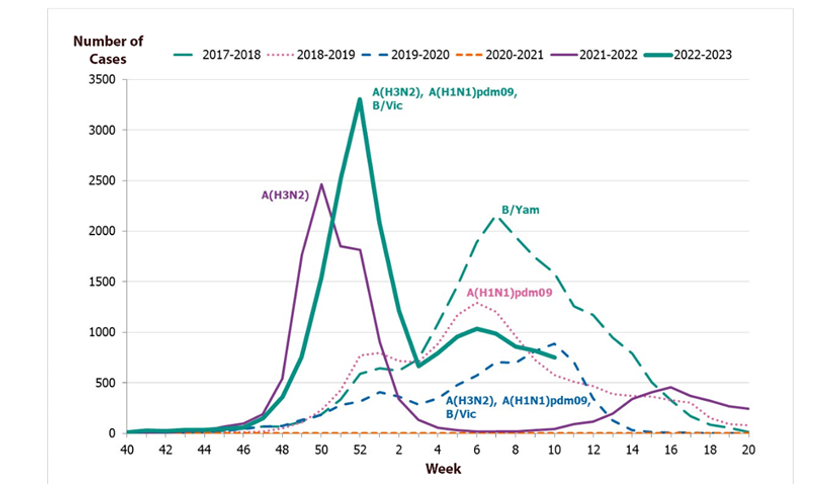COVID-19: Study Suggests Long-term Damage to Immune System
NIH News Release: "...findings suggest that SARS-CoV-2 infection damages the CD8+ T cell response, an effect akin to that observed in earlier studies showing long-term damage to the immune system after infection with viruses such as hepatitis C or HIV."
Long Covid
(Adobe Sock, anon)

As the numbers of hospitalizations and deaths are dropping, many individuals declare the pandemic all but over, comforted by the belief that infections are mild and less dangerous than the seasonal flu. However, the scientific literature these last few weeks has been filled with deeply concerning reports. We are entering a phase of long COVID and chronic disability. In the United Kingdom, 2.0 million people, or 3% of the total population and 4% of adults aged 16 and over, live with symptoms of long COVID. A recent report from the UK Office for National Statistics shows that 2.52 million people are off work due to long-term sickness, up 7.9% over the last year.
The number of COVID-19 cases in the United States is unknown since our case reporting system has become unreliable and substantially undercounts cases. In England, as of the week ending March 7, 2023, 1 in 40 people is positive for COVID-19, and reinfections are frequently occurring. Fayette Klaassen, MD, et al estimate that as of November 9, 2022, 94% of the U.S. population has been infected by SARS-CoV-2, and 65% of the United States population has been infected multiple times. Between December 2, 2021, to November 9, 2022, almost twice as many reinfections as primary infections have occurred. During this period, it is estimated there have been over 200 (118-292) million cases of reinfections. Scott Burkholz, MD, et al concluded, "Our analysis suggests that a single infection from SARS-CoV-2 may not generate the protective immunity required to defend against reinfections from emerging Omicron lineages.”
The odds of self-reported long COVID were 28% less after the second infection. Unfortunately, the damage of long COVID from a second infection adds to the first.
One of the most concerning long-term effects of COVID-19 is immune dysfunction or hypofunction. Confirmatory research by Fei Gao, PhD, et al was reported this week and summarized in a National Institute of Health news release, which stated:
"… findings suggest that SARS-CoV-2 infection damages the CD8+ T cell response, an effect akin to that observed in earlier studies showing long-term damage to the immune system after infection with viruses such as hepatitis C or HIV." The authors conclude that this dysfunction causes lasting damage and may “contribute to long COVID, perhaps rendering patients unable to respond robustly to subsequent infections by SARS-CoV-2 variants or other pathogens.”
These findings mirror those reported by Jacob Files, PhD, et al who stated, “Overall, expression of these activation and exhaustion markers indicated more severe immune dysregulation of CD8+ T cells in the hospitalized group.” And they found that “CD8 T cell expression of exhaustion markers increased in nonhospitalized individuals over time….” The authors’ finding of damage to the immune system “akin” to HIV is very concerning, as is the amplification of the result in the NIH news release. Mark Davis et al concluded that research is needed into new vaccination strategies which will boost antiviral T-cell immunity.
Figure: Number of laboratory-verfied influenza cases (all types) per week, this season and previous seasons. The chart indicates which subtype or line type dominated each season.
Source: Public Health Agency of Sweden

(Further, could this damage also be causing a “COVID-19 personality disorder?” Results from a Canadian study point that way.)
ICT previously reported that the probable cause of the surges in infections we are seeing is an immune dysfunction caused by COVID-19. With minimal public health interventions, Sweden also experienced surges in respiratory syncytial virus (RSV) cases. Most recently, Sweden has undergone a significant surge in seasonal flu (see Figure), with reports from the Public Health Agency of Sweden of unusually severe cases. These cases have occurred in “people under the age of 18 without underlying disease or condition, have been very seriously ill with complications such as myocarditis or encephalitis. (translated)”
Other diseases are also rising, exemplified by reports of record-high severe Streptococcal infections in Wisconsin and Candida auris.
These spikes in infections caused by multiple pathogens are associated with the SARS-CoV-2 pandemic and mounting evidence finding post-COVID-19 immune dysfunction. Vaccinations can not only reduce the incidence of severe disease but also can help to prevent long COVID, reducing the incidence by 30% to 40%.
However, ICT expressed concern regarding the bivalent booster’s effectiveness on September 2, 2022. On Feb. 24, 2023, ICT reported a rapid waning of booster-induced immunity in the elderly. Recently 2 confirmatory research reports have been published. Researchers from the United States found that the relative bivalent booster effectiveness at 5 to 7 months in preventing hospitalizations relative to monovalent vaccine dosages (2, 3, or 4) was 42% and 59% compared to no vaccination. Using the third vaccine dose as a baseline, the UK Security Agency found that an additional (fourth) vaccine dosage had effectiveness against hospitalizations at 10 weeks of only 50%.
This data collectively indicates that booters should be given at a schedule more frequently than once a year. Michael Osterholm, Director of the Center for Infectious Disease Research and Policy (CIDRP), feels that “people who are 50 and older in the U.S. should be offered the chance to get a second booster.”
Although the United States is still planning to give a second booster once a year, the United Kingdom, Canada, and Australia plan to boost their high-risk population on a 6-month basis. The United Kingdom will provide a second booster 6 months after the first for those over 65, in care homes, or who are immunosuppressed. In Canada, high-risk individuals will be offered a second booster this spring. Australia gives boosters every 6 months after the last booster or COVID-19 infection (whichever is the most recent). Australia recommends an additional booster for those over 65 and at high risk for COVID-19.
We can choose to declare the pandemic over, but SARS-CoV-2 is deaf to these pronouncements. New research regarding Long COVID and immune dysfunction is very concerning. Hopefully, the dysfunction will be temporary and progressive in most individuals. However, just the possibility makes avoiding COVID-19 infections paramount, and we must keep our immunity as high as possible. To accomplish this, vaccine boosters should be offered at least to high-risk individuals and those over the age of 65 more frequently than once a year, possibly every 6 months. All need to implement public health strategies (ie, wearing well-fitted N95 masks and avoiding poorly ventilated indoor spaces) to avoid becoming exposed to SARS-CoV-2 in the first place.
“Ongoing Assault”: How HHS Layoffs Have Eviscerated Infection Prevention Support Across the Nation
April 1st 2025Mass layoffs at HHS and CDC have gutted critical infection prevention programs, leaving frontline professionals overwhelmed, under-resourced, and desperate to safeguard public health.
Together We Rise: Why AORN Expo 2025 Is a Must for Every Perioperative Nurse
March 31st 2025From April 5 to 8, 2025, thousands of perioperative nurses will gather in Boston for the 2025 AORN Global Surgical Conference & Expo—a transformational experience designed to elevate nursing practice, build lifelong connections, and advance surgical care.
Vet IP Roundtable 2: Infection Control and Biosecurity Challenges in Veterinary Care
March 31st 2025Veterinary IPs highlight critical gaps in cleaning protocols, training, and biosecurity, stressing the urgent need for standardized, animal-specific infection prevention practices across diverse care settings.